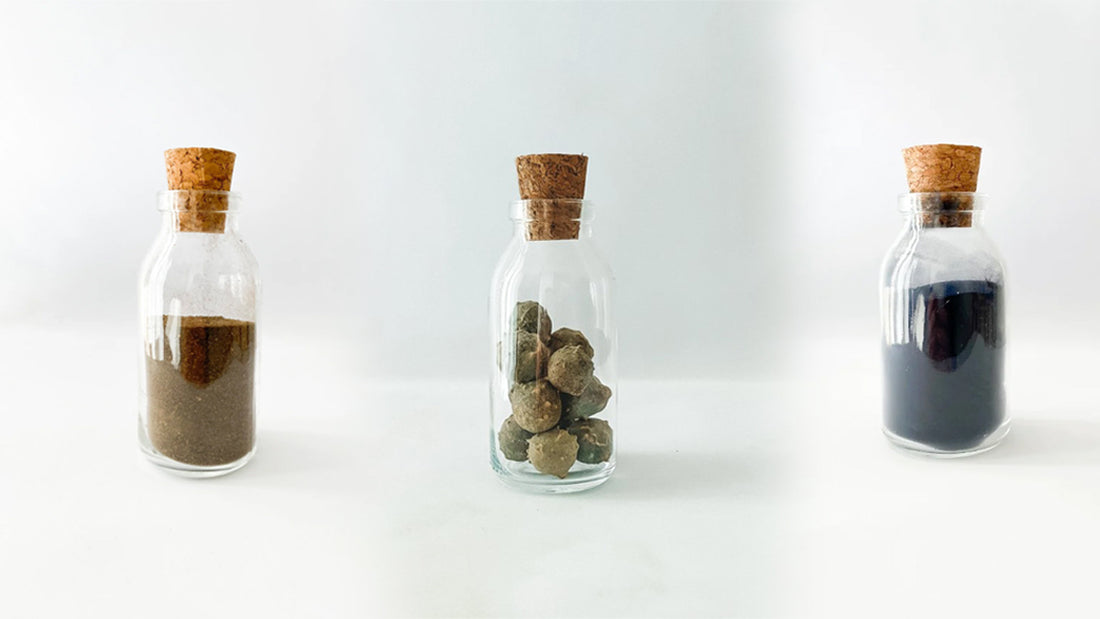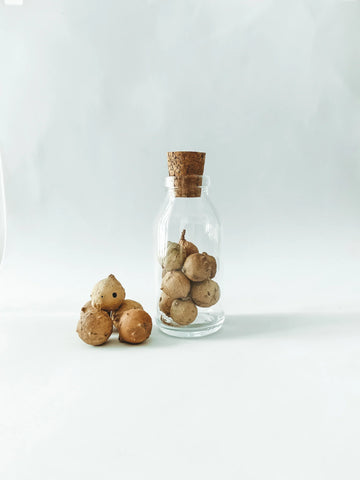
4 Natural Dyes That Don't Need a Mordant
Mordanting is an integral part of dyeing fabrics with natural extracts. But there are natural dyes that don’t need a mordant at all. Even though the process is essential for colorfast results, it is possible to dye fabrics with extracts that bind to the fabric naturally. These natural dyes remove the need for such fixing substances.
Dyeing with such natural dyes is also faster and easier as they allow you to skip the mordanting process altogether. Knowing that some of the mordant substances are toxic, you might want to dye without them as well. Regardless of your reason for a mordant-free dyeing session, these natural dyes below will ensure that you get colorfast results. Due to the high level of tannin, they encourage you to experiment and get great results as well.
Which natural dyes don’t need a mordant?
There are lots of different natural dyes that retain their colorfastness. We also call them substantive dyes as they bite into the fabric without the addition of an extra mixture. Unlike their adjective counterparts, indigo and black walnut hulls will allow you to get mesmerizing results.
1. Indigo

The world of natural dyeing starts with indigo. This amazing natural extract is one of the oldest dyes that natural dyers have depended on. It has been commonly used by our ancestors in Mesopotamia. Its ability to bind to the fiber makes it one of the best substantive dyes as well.
It is important to note that there are various forms of indigo. Yet the most common one is harvested from the Indigofera plant, native to the Indian subcontinent. The process of harvesting and fermenting the plant’s leaves is quite complex. Yet the result is always amazing as indigo is a rich and vibrant color. Natural dyers often describe it as a mixture of blue, violet, and dark blue with purplish tones.
Indigo is one of the best natural dyes that don’t need a mordant. If you want to achieve this wonderful color in your dyeing sessions, make sure that you have the best form of natural indigo in your dyeing arsenal.
2. Black Walnut Hull Powder

Black walnut hull powder is another natural extract that is high in tannin. Natural dyers who harvest walnuts often see that the dye stain remains on their hands for a long time. That’s because the walnut dye is tannin-rich, making it a viable option for dyeing sessions without a mordant. Today, we know that the most influential painters like Rembrandt and Leonardo da Vinci used walnut hull dye as it can also be used to make ink. In the past, walnut hull dye was used to dye hair and beard.
Most natural dyers today depend on the powder obtained from black walnut hulls to get more earthen tones. Those who look for warmer brown shades prefer this very natural dye as it is easy to use and does not need a mordant.
While the hull powder does serve as a natural binding solution, using a mordanting substance can help you achieve darker brown tones as well.
3. Oak Gallnuts

Oak gallnuts are one of the best sources for natural mordants. They have an incredible amount of tannin as well. That’s why they are not only great as substantive dyes, but they are also great to use in the mordanting process. Oak gallnut powder will ensure that the natural dyers achieve sharper tones when used on cellulose fibers. It is possible to see the use of oak galls in eco-printing as well.
4. Quebracho
Quebracho refers to a tree species that are native to South America. And the word quebracho in Spanish means “axe breaker” as the species are known for their firm and durable structure.
Similar to its hardness, the amount of tannin in these trees is incredibly high. After chipping and cooking the logs, the quebracho powder comes with at least 60% tannin. The incredibly high level of tannin makes it one of the best natural dyes as well. This allows the natural dyer to skip the mordanting process.
Dyeing with quebracho will often create golden browns and brown reds. Yet the extract, which is quite rich in tannin, can also be used with alum mordant. While that is not essential, using an alum substance will result in brighter colors.
Can you dye fabrics without a mordant?

Yes, as we mentioned above, there are natural dyes that can be used on cellulose fibers without mordanting. The organic extracts above are great for dyeing without binding solutions. You will see that the colors occur quite naturally when using these dyes. The amount of tannin within them is immense, making them capable of retaining their color on natural fibers.
If you do not have any alum available or wish to avoid other methods for environmental concerns, consider using natural dyes above they bite into the fiber and retain their color for a long time.
Conclusion
It is indeed important to follow the base instructions of the dyeing and mordanting process. But the world of natural dyeing encourages us to experiment and get creative. You will often see that the results are never the same even if you use the right ingredients in every dyeing session. That’s the very reason why dyeing with natural extracts is thrilling.
Moreover, not having enough materials for mordanting should not stop you as well. As we have covered in this guide, the world of dyes is rich and has room for freedom and experimentation. Try dyeing those natural fibers of your and achieve the most wonderful tones that will make you proud of your project.